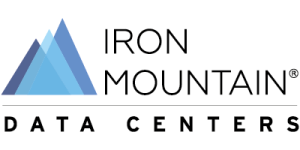Data Center Construction in 2025: Permitting, Power, and Pitfalls to Avoid
Building in the Age of AIThe data center industry has always been about scale, but in 2025, the scale of construction projects has reached unprecedented levels. Hyperscalers, colocation providers, and enterprises are no longer building single facilities—they’re developing multi-hundred-MW campuses that span hundreds of acres and include multiple phases. These projects are designed to support artificial intelligence (AI), high-performance computing (HPC), and sovereign cloud regions.But with this growth comes complexity. Building data centers today involves more than just pouring concrete and running fiber. Developers face permitting delays, power shortages, environmental scrutiny, and escalating costs. The stakes are high: a misstep in planning or execution can result in stranded capital and years of lost opportunity.For operators, investors, and enterprises evaluating providers, understanding the construction realities of 2025 is essential. Success depends not only on speed but also on navigating the regulatory, environmental, and infrastructure challenges that define this era of digital infrastructure.Permitting: The New BottleneckLengthening TimelinesIn the past, securing permits for a new data center might have taken six to twelve months. Today, in markets like Northern Virginia, Dublin, and Singapore, the process can stretch into two to three years. Municipalities are imposing stricter reviews on land use, noise, and environmental impact, slowing down timelines across the board.Community ResistanceResidents are pushing back on large-scale data center projects, citing concerns about noise, water consumption, and visual impacts. In some cases, opposition has escalated into lawsuits or political campaigns, forcing developers to abandon or relocate projects.Best PracticesDevelopers who succeed in 2025 treat permitting as a strategic function:Engage early with community stakeholders.Provide transparent ESG reporting to regulators.Partner with local governments and utilities to align infrastructure upgrades.Permitting is no longer an afterthought—it is the first hurdle in the construction process.Power: The Ultimate ConstraintUtility MoratoriumsPower availability has become the single greatest challenge in data center construction. In Northern Virginia, utilities have imposed moratoriums on new connections. Similar constraints exist in Singapore and parts of Europe. Even where land is plentiful, projects cannot proceed without guaranteed power delivery.Securing CapacityDevelopers are now negotiating long-term, multi-hundred-MW contracts directly with utilities, often years before breaking ground. Some are investing in on-site generation, including solar, wind, and fuel cells, to reduce dependence on strained grids.High-Density ReadinessAI and HPC workloads drive extreme rack densities, requiring advanced power distribution systems. Modern construction incorporates 415V or higher voltage architectures, redundant busways, and smart monitoring to handle racks consuming 80–120 kW.Pitfalls in Data Center ConstructionUnderestimating TimelinesMany projects stall because developers underestimate the time required for permitting and utility negotiations. In 2025, the fastest builds are those that secure land, permits, and power pipelines years in advance.Failing to Future-Proof CoolingConstructing a facility around traditional air cooling is a critical mistake. AI-ready designs must integrate liquid and immersion cooling from day one. Retrofits are costly and disruptive.Ignoring ESG RequirementsInvestors, regulators, and tenants demand compliance with ESG mandates. Developers that overlook renewable sourcing, water stewardship, and heat reuse risk losing contracts to competitors.Cost OverrunsEscalating construction costs—driven by labor shortages, supply chain disruptions, and inflation—can derail projects. Successful developers mitigate this risk with modular design strategies and multi-phase buildouts.Innovations in ConstructionModular and Prefabricated BuildsPrefabricated data center modules allow developers to cut timelines by months, standardize designs, and reduce cost overruns. In 2025, modular campuses are no longer niche—they are the default strategy for speed-to-market builds.Heat Reuse IntegrationSome developers now design campuses with district heating connections, enabling them to reuse waste heat from AI clusters in local communities. This adds ESG value and improves community relations.Automation and RoboticsRobotics and AI-driven project management tools are streamlining construction, reducing labor costs, and improving precision. Large developers are adopting digital twins to model facilities before breaking ground.Global Examples of Construction TrendsNorthern VirginiaStill the largest global hub, Virginia faces power and permitting bottlenecks. Developers are moving into Prince William and Fauquier counties, but political resistance remains a major hurdle.Dallas–Fort WorthTexas is booming thanks to abundant land and relatively unconstrained power. Developers are using renewable PPAs and modular builds to keep pace with demand.ScandinaviaNorway and Sweden are gaining traction with greenfield builds powered by hydroelectricity. Permitting is stricter, but projects benefit from abundant renewable power and cooling-ready climates.Asia-PacificMarkets like Malaysia and Indonesia are emerging as alternatives to constrained hubs like Singapore, offering land and power availability at scale. Developers here are prioritizing regional interconnection and government-backed incentives.What Enterprises Should Ask ProvidersWhen evaluating colocation partners or wholesale providers, enterprises should ask:How did you secure power for this site, and is it expandable?What is the permitting timeline, and how was community engagement handled?Is the facility liquid- and immersion-cooling ready from day one?What ESG commitments are built into the design?Can the site scale through multi-phase expansion?The answers reveal whether a provider has truly built with the future in mind.Strategic Role of Construction in 2025 and BeyondIn 2025, data center construction is no longer just an engineering exercise. It is a strategic, multi-stakeholder processthat balances power, permitting, sustainability, and cost.The winners will be developers who:Secure power pipelines and renewable integration.Engage communities and regulators proactively.Build liquid cooling and high-density readiness into designs.Deliver projects on time and on budget through modular strategies.For enterprises, choosing providers who can demonstrate construction excellence is essential. The right partner ensures workloads run in compliant, sustainable, and future-ready environments. The wrong choice risks outages, compliance failures, and stranded investments.
























